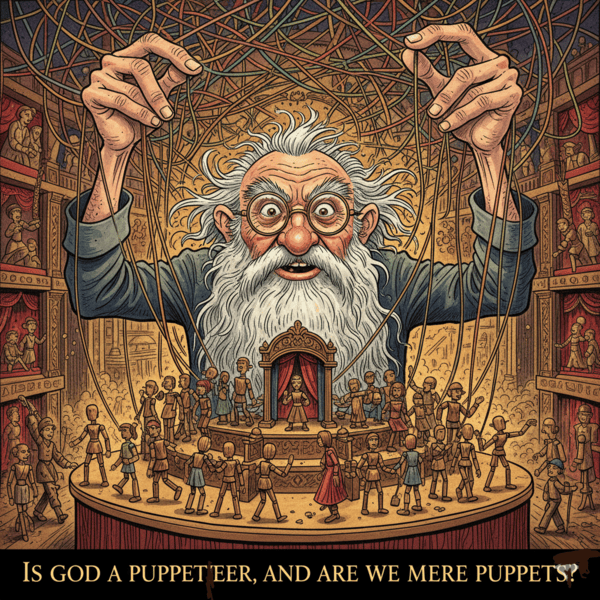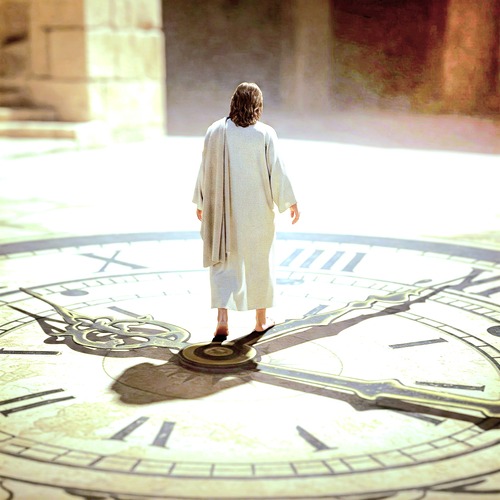How the Torah Points to Christ: Prophecies, Patterns, Promises…
The first five books of the Bible—Genesis, Exodus, Leviticus, Numbers, and Deuteronomy—form what we call the Torah. Far from being merely ancient history or a legal code, these texts are saturated with glimpses of the coming Messiah. From the Reformed perspective, the Torah isn’t just a precursor to Christ; it’s a divine signpost pointing directly to Him as the fulfilment of God’s redemptive plan.
DIRECT MESSIANIC PROPHECIES: WORDS THAT ECHO THROUGH TIME
The Torah contains several explicit prophecies that find their fulfilment in Jesus Christ:
- Genesis 3:15: In the aftermath of humanity’s fall, God declares that the seed of the woman would crush the serpent’s head. This “proto-evangelium” (first gospel) announces the coming of One who would defeat Satan at great personal cost. Only in Christ do we see this prophecy fulfilled—born of a woman, crushing Satan’s power through His sacrificial death and resurrection.
- Genesis 12:3, 22:18: God promises Abraham that “in your seed all the nations of the earth shall be blessed.” This covenant promise reaches far beyond Israel to embrace all peoples. Galatians 3:16 confirms that this “seed” is singular, pointing specifically to Christ, through whom salvation has indeed reached the nations.
- Genesis 49:10: Jacob’s blessing over Judah prophesies that “the sceptre shall not depart from Judah… until Shiloh comes, and to Him shall be the obedience of the peoples.” This royal figure from Judah’s line, who commands the obedience of all peoples, finds its fulfilment in Jesus, the Lion of Judah.
- Numbers 24:17-19: Balaam’s unwilling prophecy declares: “A Star shall come out of Jacob; a Sceptre shall rise out of Israel.” This star imagery connects powerfully to the star of Bethlehem, guiding wise men to worship the newborn King.
- Deuteronomy 18:15-19: Moses himself points forward: “The LORD your God will raise up for you a Prophet like me from your midst…” Jesus explicitly claims this fulfilment in John 5:46: “For if you believed Moses, you would believe Me; for he wrote about Me.”
MESSIANIC TYPOLOGY: PEOPLE WHO PREFIGURE CHRIST
The Torah presents numerous individuals who foreshadow Christ, each revealing different facets of His character and work:
Adam is the federal head of humanity, whose disobedience brought sin and death. Christ, as the “last Adam” (1 Corinthians 15:45), serves as the new federal head whose perfect obedience brings righteousness and life to all who are in Him.
Abraham offering Isaac prefigures God the Father offering His beloved Son. Just as Isaac carried the wood for his own sacrifice up Mount Moriah, Jesus carried His cross up Golgotha. Unlike Isaac, however, no substitute was provided for Jesus—He Himself was the substitute.
Joseph, rejected by his brothers, sold into suffering, falsely accused, and finally exalted to a position of authority from which he saves the very ones who rejected him, paints a vivid portrait of Christ’s humiliation and exaltation.
Moses serves as deliverer, mediator, lawgiver, and intercessor—all roles that Christ fulfils perfectly. Yet while Moses could only lead Israel out of physical bondage in Egypt, Christ delivers His people from the spiritual bondage of sin.
MESSIANIC TYPOLOGY: SYSTEMS THAT FORESHADOW GRACE
The Levitical system was never an end in itself. Rather, it served as “a shadow of the good things to come” (Hebrews 10:1):
- The Tabernacle/Temple represented God dwelling among His people, yet with barriers and restrictions. In Christ, God “tabernacled” among us (John 1:14) without barriers, making access to God available to all who believe.
- The Sacrificial System required endless repetition because animal blood could never truly remove sin (Hebrews 10:4). These sacrifices pointed to Christ’s once-for-all sacrifice that actually accomplishes what these sacrifices symbolized.
- The Priesthood served as mediators between God and the people. Christ fulfils and transcends this role as our eternal High Priest who “continues forever” and “lives to make intercession” for us (Hebrews 7:24-25).
- The Day of Atonement ritual, performed annually, involved the high priest entering the Holy of Holies with blood to make atonement. Christ, as both priest and sacrifice, entered the heavenly sanctuary “once for all” with His own blood, securing eternal redemption (Hebrews 9:12).
WHAT THE LAW COULD NOT DO: THE NECESSITY OF CHRIST
The Torah, while perfect in its revelation of God’s standard, demonstrates humanity’s desperate need for Christ:
“For what the law could not do in that it was weak through the flesh, God did by sending His own Son in the likeness of sinful flesh” (Romans 8:3). The law reveals sin but cannot provide the power to overcome it. It shows the standard but cannot transform the heart. It prescribes sacrifice but cannot provide final atonement.
This inability isn’t a defect in the law but reveals the defect in us. The law serves as our “tutor to bring us to Christ, that we might be justified by faith” (Galatians 3:24).
TOTAL DEPRAVITY: THE HUMAN CONDITION CRYING OUT FOR DIVINE INTERVENTION
The Torah presents an unsparing portrait of human sinfulness:
Adam and Eve fell in perfect conditions. Their descendants descended into such wickedness that God sent the Flood. Even after this judgement, human arrogance resurged at Babel. Abraham, Isaac, and Jacob, though men of faith, displayed serious moral failures. Israel, despite witnessing God’s mighty acts of deliverance, repeatedly rebelled in the wilderness.
This consistent pattern reinforces our total inability to save ourselves. Not only do we sin—we are sinners by nature, unable to fulfil God’s law. This reality points to our desperate need for a Saviour who could perfectly fulfil the law on our behalf and bear its curse for our transgressions.
THE PROMISE OF A NEW COVENANT: BEYOND THE LETTER TO THE SPIRIT
Even as the Torah establishes the Mosaic covenant, it hints at something greater to come:
Deuteronomy 30:6 speaks of a circumcision of the heart—a spiritual transformation that the external rite merely symbolised. Moses prophesies both Israel’s exile for disobedience and their eventual restoration through divine intervention (Deuteronomy 30:1-10), pointing to a covenant that would succeed where the Mosaic covenant failed because of human weakness.
This new covenant, more fully revealed in later prophets but implied in the Torah itself, would be characterised by forgiveness of sins and the law written on hearts rather than stone—precisely what Christ accomplished.
CONCLUSION: HOW THE TORAH POINTS TO CHRIST
Christ isn’t merely predicted in the Torah; He permeates it. Every sacrifice, every feast, every priesthood function, every deliverance narrative, and every covenant promise finds its “yes” and “amen” in Him (2 Corinthians 1:20). The Torah wasn’t merely a prelude to grace—it was pregnant with the grace that would be fully revealed in Christ.
In God’s divine wisdom, He provided these glimpses of Christ centuries before His incarnation, so that when the “fullness of the time had come” (Galatians 4:4), those with eyes to see would recognise Him as the One to whom all Scripture had been pointing. Indeed, as Augustine insightfully observed: “The New Testament lies hidden in the Old, and the Old Testament is unveiled in the New.”
The Torah points to Christ because, ultimately, all of Scripture is about Him. He is the true theme of the biblical narrative, the hero of the story. And the fulfilment of all God’s promises to His people.
HOW THE TORAH POINTS TO CHRIST: RELATED FAQs
Aren’t Christians reading Jesus back into the Torah rather than finding him there naturally? This “retrospective reading” objection misunderstands the nature of progressive revelation. GK Beale argues the apostles weren’t imposing Christ onto texts but recognising patterns God deliberately embedded within Scripture’s unified storyline. Jesus Himself claimed Moses wrote about Him (John 5:46), establishing that proper interpretation sees these connections as intrinsic to the text rather than artificially imposed by later readers.
- How do we know which Torah figures are truly types of Christ versus just interesting parallels? For typology to be valid, contemporary Reformed scholars like Richard Davidson and James Hamilton suggest several criteria: the correspondence must be significant (not superficial), based on historical realities (not allegory), show escalation from type to antitype, and ideally have New Testament warrant. The most reliable types are those explicitly identified in the New Testament, while others should demonstrate clear textual connections and point to Christ’s person or work in substantive ways.
- If the Torah is so Christ-centred, why have most Jewish scholars throughout history not seen these connections? Michael Horton explains this as the “veil” Paul references in 2 Corinthians 3:14-16, where only in Christ is this veil removed. Without diminishing the value of Jewish interpretation, Reformed theology recognises the Holy Spirit’s illumination is necessary to fully grasp Scripture’s Christological dimensions, as Jesus demonstrated on the Emmaus road (Luke 24:27). Additionally, many Jewish interpretive traditions developed specifically in response to Christian claims, creating an interpretive framework deliberately constructed to avoid Christological readings.
Does seeing Christ in the Torah diminish its original meaning and significance for ancient Israel? Contemporary Reformed scholars like Peter Gentry and Stephen Wellum advocate for a “Progressive Covenantalism” that honours both the original context and its fulfilment in Christ. The Christological reading doesn’t negate the Torah’s original significance for Israel but completes it, showing how God’s redemptive purposes unfold through organic development rather than replacement. The Torah simultaneously functioned as Israel’s constitution and pointed forward to Christ—these purposes complement rather than contradict each other.
- How do we reconcile the seemingly harsh legal penalties in the Torah with Christ’s message of grace and mercy? Timothy Keller explains the Torah’s legal severity demonstrates the seriousness of sin and establishes the need for substitutionary atonement that Christ would later provide. The Torah’s penalties were never meant as the final solution but as signs pointing to humanity’s desperate need for redemption outside ourselves. Furthermore, even within the Torah itself, mercy repeatedly triumphs over strict justice, foreshadowing the fullness of grace that would come through Christ.
- Are there Messianic prophecies in the Torah that Jews and Christians interpret differently? Absolutely—Genesis 49:10 (the sceptre from Judah) is interpreted by many Jewish scholars as referring to the Davidic monarchy in general rather than a specific Messiah figure. Similarly, Numbers 24:17-19 (the star from Jacob) is viewed by some Jewish interpreters as fulfilled in King David or potentially a future Davidic ruler not identical to the Christian understanding of Christ.
How do contemporary Reformed scholars respond to historical-critical approaches that reject predictive prophecy in the Torah? DA Carson and GK Beale acknowledge the human contexts of Scripture while maintaining its divine inspiration and unity. They argue critical scholarship often operates from naturalistic presuppositions that unnecessarily exclude supernatural revelation and predictive prophecy. Recent Reformed scholarship emphasises that recognising the divine author behind the human authors allows us to see connections and prophecies that arise naturally from the text itself rather than imposing anachronistic readings onto the Torah.
HOW THE TORAH POINTS TO CHRIST: OUR RELATED POSTS
Editor's Pick

The Throne-Room Vision: Who Did Isaiah See?
The scene is unforgettable: Isaiah stands in the temple, and suddenly the veil between heaven and earth tears open. He [...]

The Angel of the Lord: Can We Be Certain It Was Christ All Along?
Throughout the Old Testament, a mysterious figure appears: the Angel of the LORD. He speaks as God, bears God’s name, [...]

The Doctrine of Providence: Does God Really Govern All Things?
You’re sitting in the doctor’s office when the diagnosis lands like a thunderclap. Your mind races: Why this? Why now? [...]
SUPPORT US:
Feel the Holy Spirit's gentle nudge to partner with us?
Donate Online:
Account Name: TRUTHS TO DIE FOR FOUNDATION
Account Number: 10243565459
Bank IFSC: IDFB0043391
Bank Name: IDFC FIRST BANK






